Greyish green succulents, rocks, fine gravel, and sand have created a distinctive charm to a desert landscape. Although it is not as colourful as a cottage garden, it still has a wow factor that can boost the curb appeal of your home.
Desert Landscape: An Overview
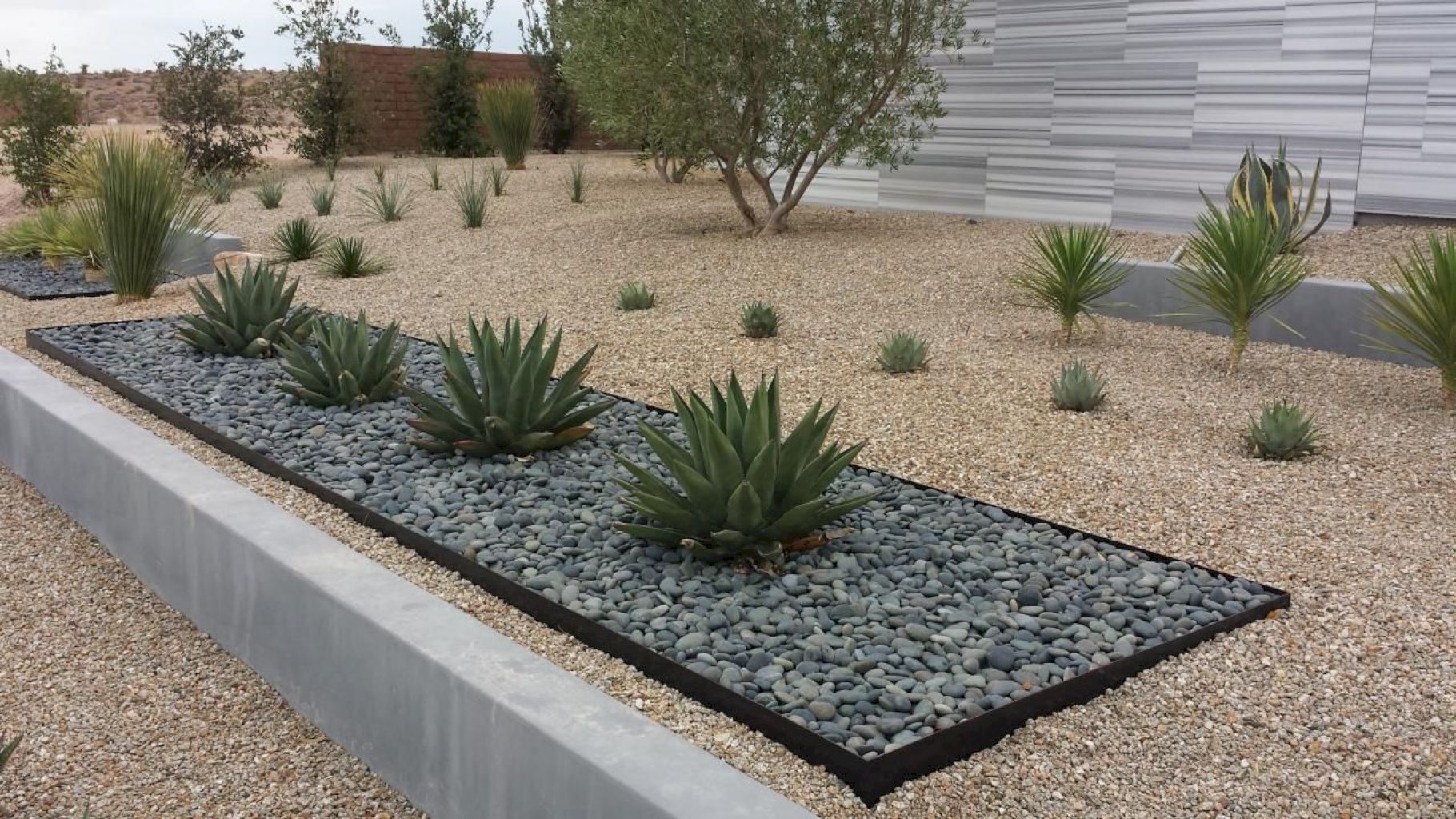
Before carving out a desert landscape, you had better know what it is all about.
Deserts are areas that get little precipitation, meaning they have a very low annual rainfall and the water is scarce.
Just think about Egypt, Morocco, California, Nevada, and many other regions in the Southwestern United States. You will find lots of rocks and sand while the water is very little.
Sometimes, it’s a little troubling when you are relocating the rocks or remove them. We have an article for removing the rock from the soil.
So, how does the vegetation survive? What are the elements that make a desert landscape?
The Hardscaping of a Desert Landscape
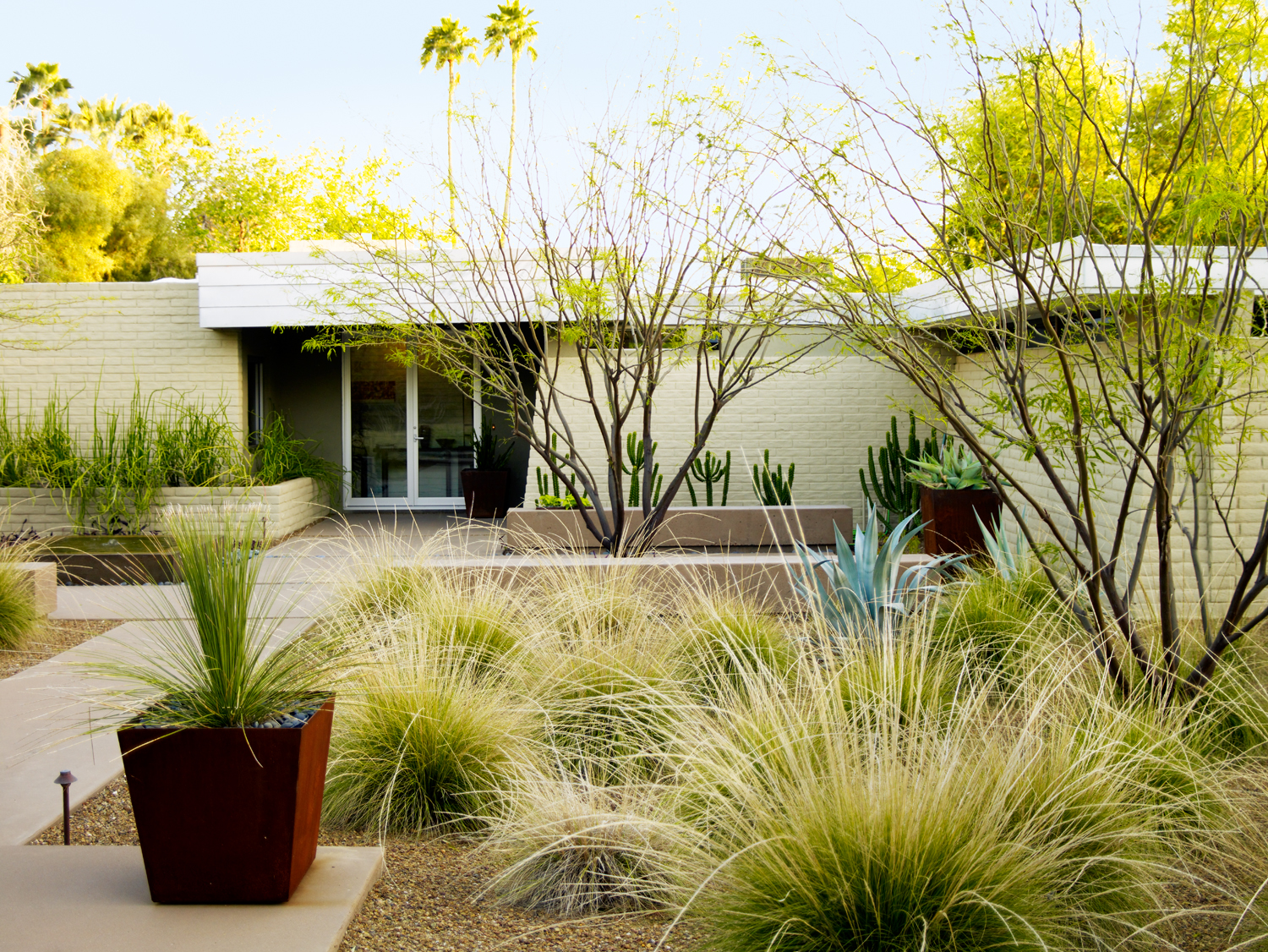
Hardscape is one of the most significant elements when it comes to creating a desert landscape because it does not require any water or regular maintenance.
You will not find any lush green manicured lawn in a desert landscape. You will see sand, fine gravel, or mulch that covers the soil instead, replacing the grass that requires you to water and mow it regularly.
Just like this modern desert landscape. It does not have any lawn at all. It has a concrete pathway with a clean-lined design that escorts you to the door, instead.
The Softscaping of a Desert Landscape
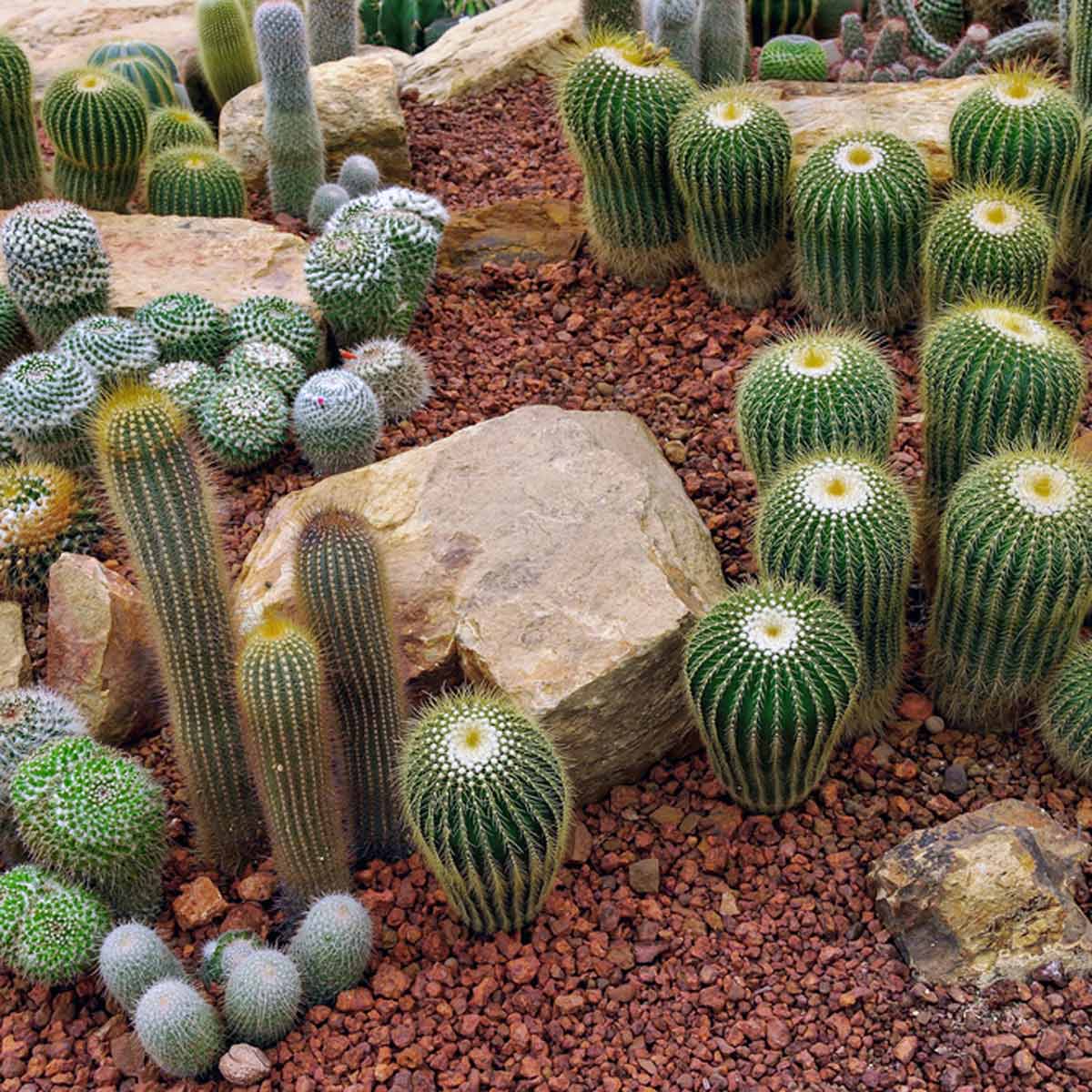
As a good rule of thumb, do not fight against nature. It is a desert. Do not ever think you can have lush green lawn or flower beds which are full of colorful flowers, such as hydrangeas, petunias, or butterfly bush because water is scarce here.
It does not mean you can give up on having a spectacular desert landscape, though. Some plants are drought tolerant. Therefore, they can thrive well in a desert.
Desert Landscape Significant Features
Just like any other exterior design, the desert landscape also has significant features that distinguish it from its counterparts. What are they?
Let us check out these simple desert landscape ideas!
Dress up the Free-Standing Wall
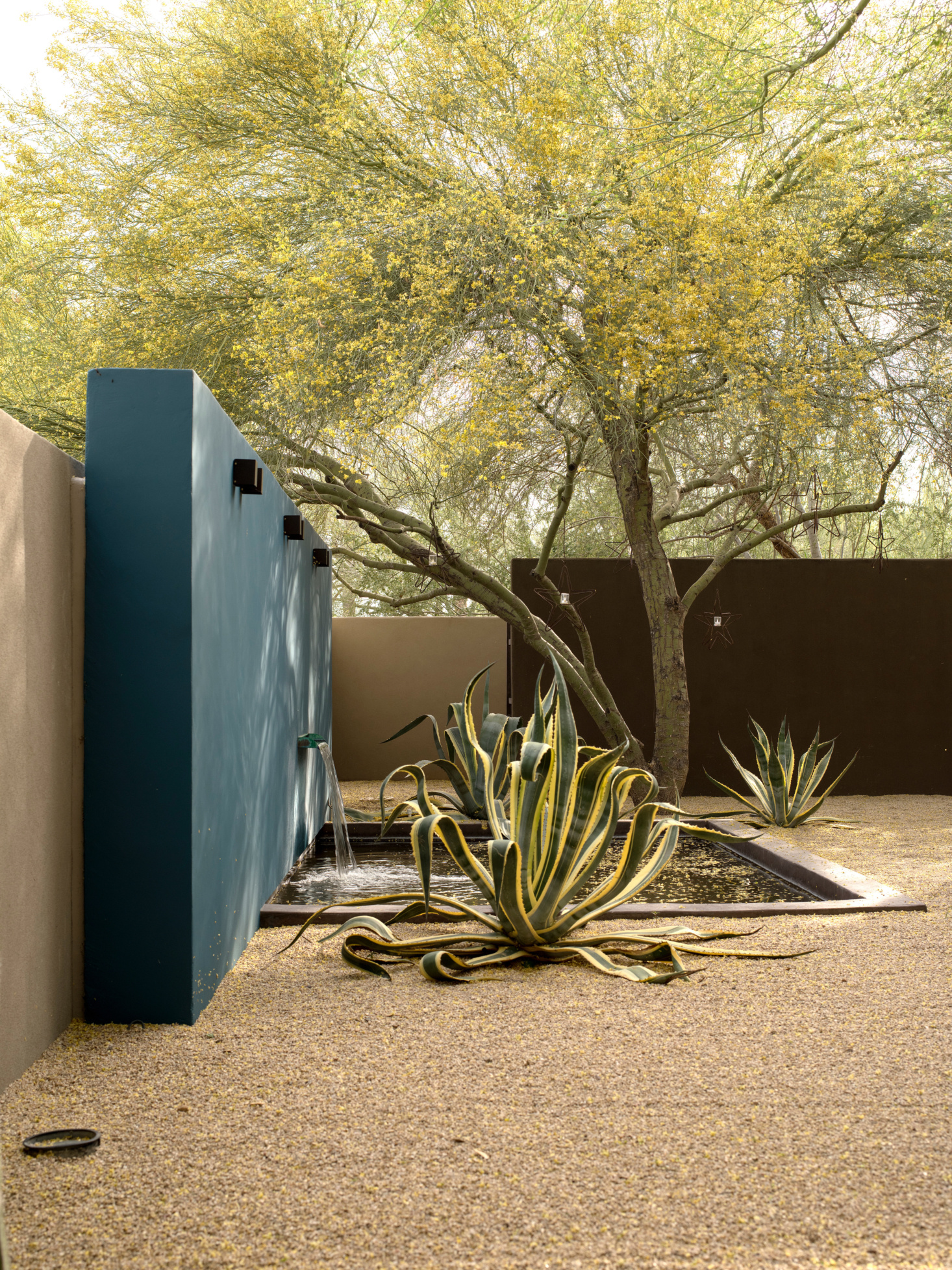
Whether it is a retaining wall or a privacy screen, if you happen to have it in your garden, accentuate it with paint.
Since you are going to carve out a desert landscape, avoid using bright and vibrant colours. Darker hues with “burnt” effects like chocolate brown, deep red, dusty orange, and light tan would be your safe bet.
Efficient Water Feature
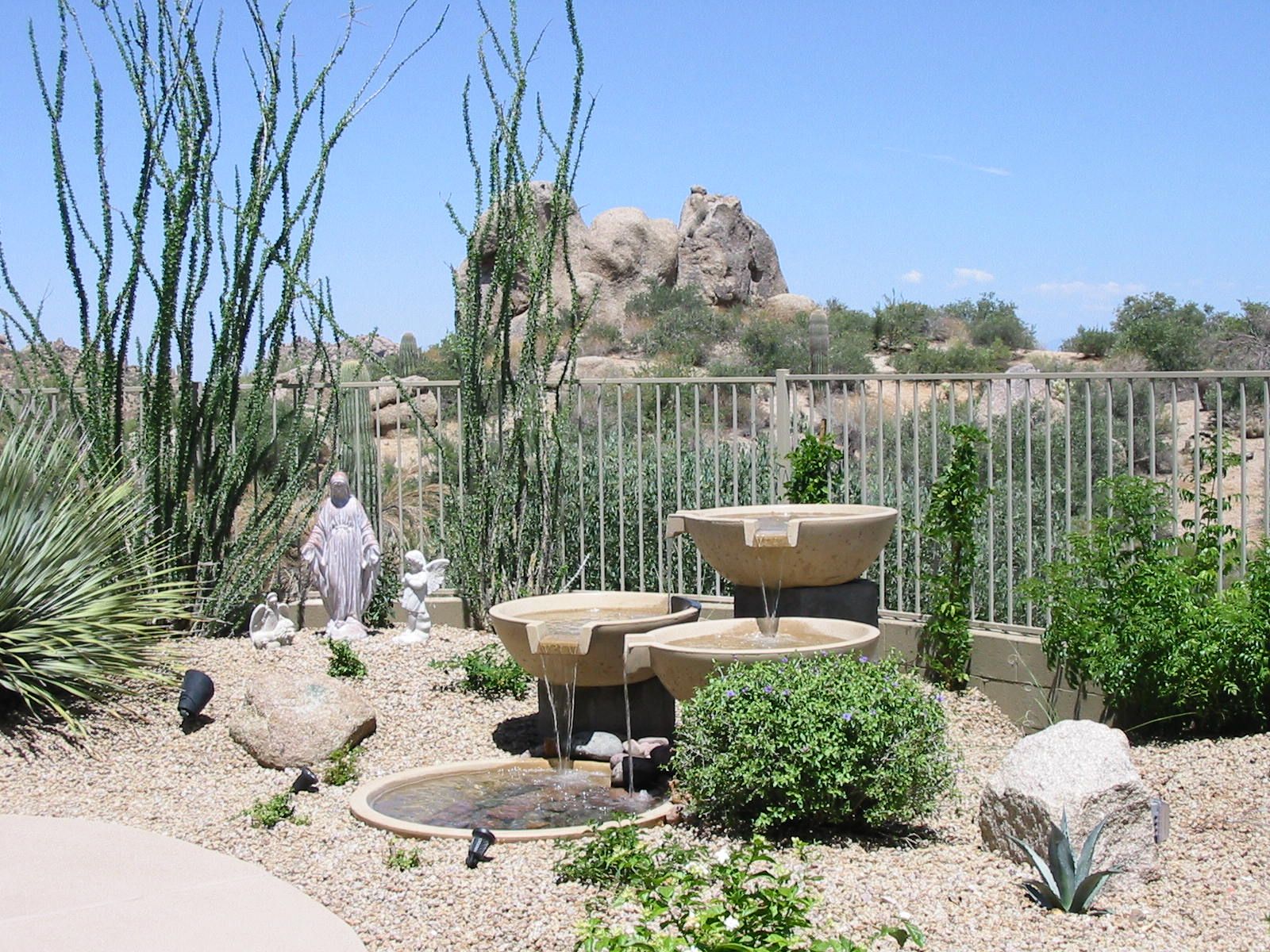
Incorporating water feature in a garden is such a terrific idea. However, if you live in a desert or want to emulate the look of it, you have to use this resource wisely. It does not mean you have to ditch this idea, though.
Since water is scarce, try making conservative water features for your desert landscape, instead. A small pond or recirculating fountain would be your top-notch choice because they will not waste this most precious resource for anything.
Or you want to setup sanitation system like septic tank pumping ? Setting the system in landscape area is recommended.
No-Water River Beds
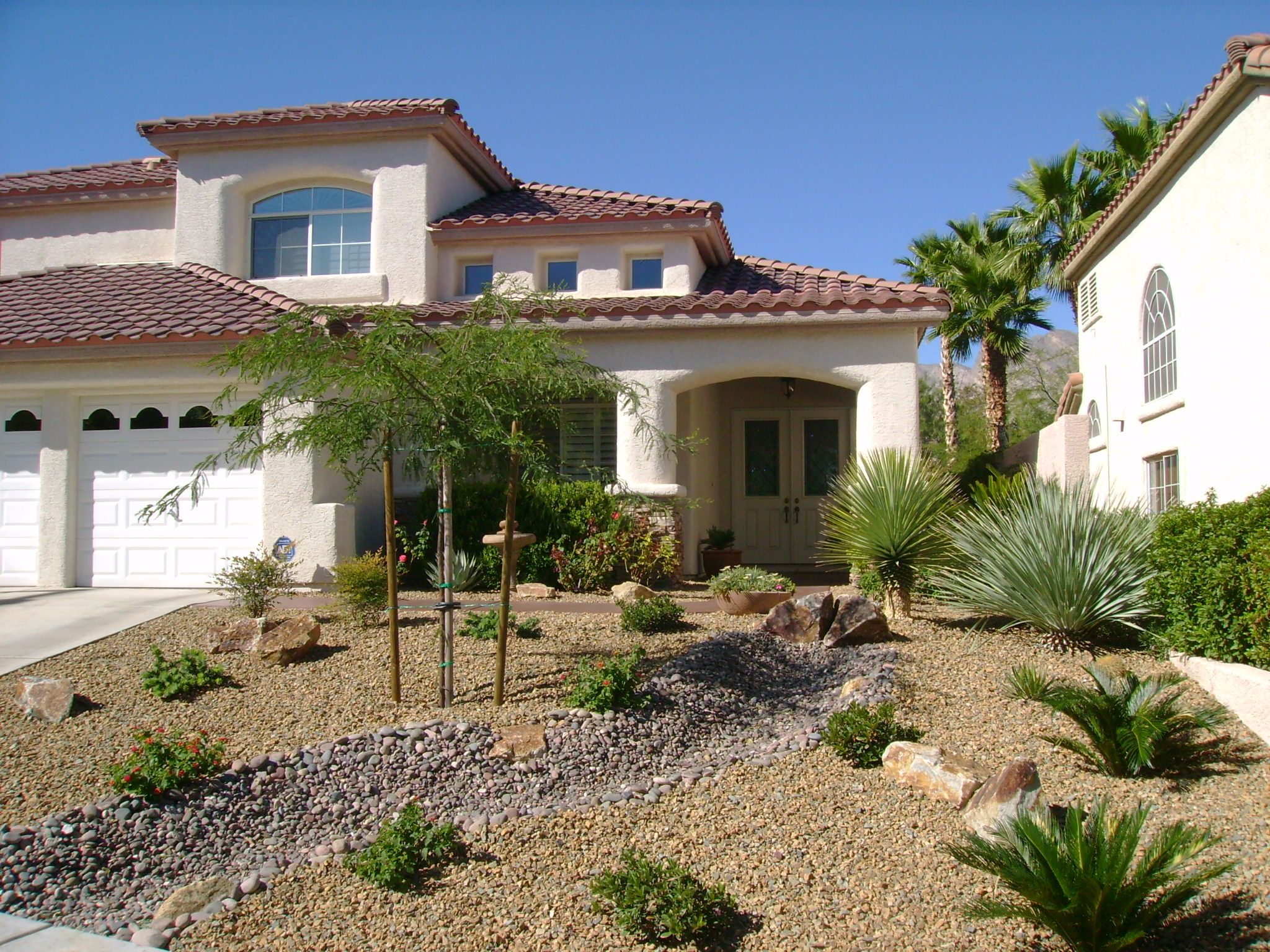
The idea of having a vast water feature like a full-sized pool or a big pond is tempting, but it does not fit in with the natural environment of a desert.
Instead of wasting too much valuable water, why don’t you just make a dry riverbed for your desert landscape sand?
In the desert regions like Nevada or California, you will be likely to find dry riverbeds due to the hot summer. Try to bring this look into your garden by emulating it.
To make this no-water riverbed, you need to use soil to create a subtle change to the gradient that you have in your yard. Dig a valley and fill it with gravel and stones. Round out it by planting some drought-tolerant plants.
Add Some Shades
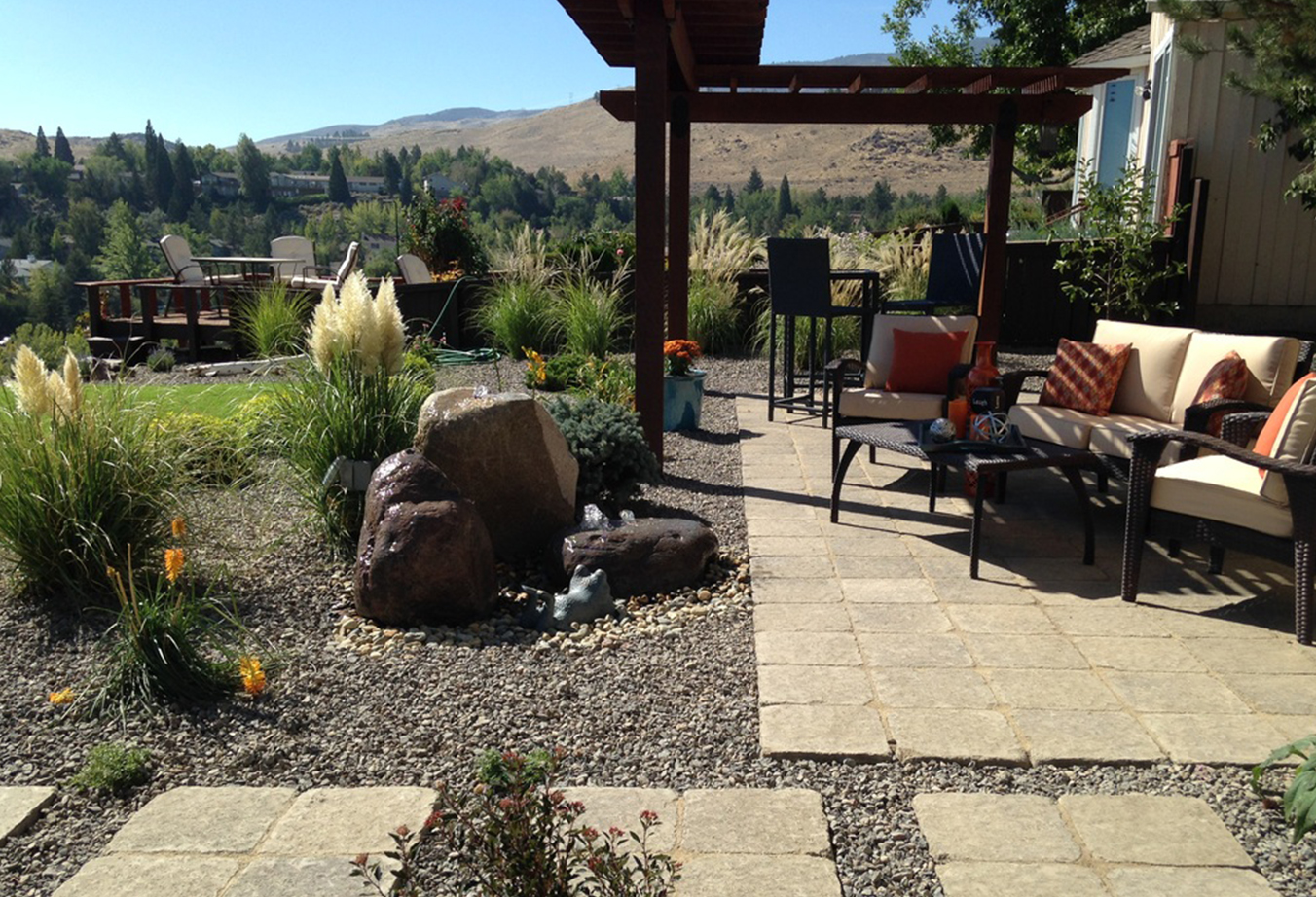
In the desert, the sun tends to be glaring. You can alleviate it by making a shady spot where you can escape from the heat. It can be in the form of a pergola, a canopy, and a shade screen.
You can also make it more appealing by building it using sun-weathered wood or logs. You will get not only a shady escape but also a rustic charm in your front yard or backyard.
Build a Fire Pit

The unique thing about a desert is the extreme weather changes. The days are eminently hot. However, you will experience chilling nights due to the low temperature. It usually happens in the winter.
With the freezing night like this, you will probably prefer to stay in your bedroom, curling in it. However, you will not want to miss the twilight hours that offer you a spectacular landscape.
For this reason, you are going to need to build a fire pit so that you can still enjoy the view without being frozen.
You can make a fire pit from concrete slabs or bricks. Adding a seating area around it would be terrific.
Desert Landscape Plants
Just like any other landscaping ideas, plants always play a crucial role. However, because deserts lack water, you must grow drought-resistant ones.
Cactus
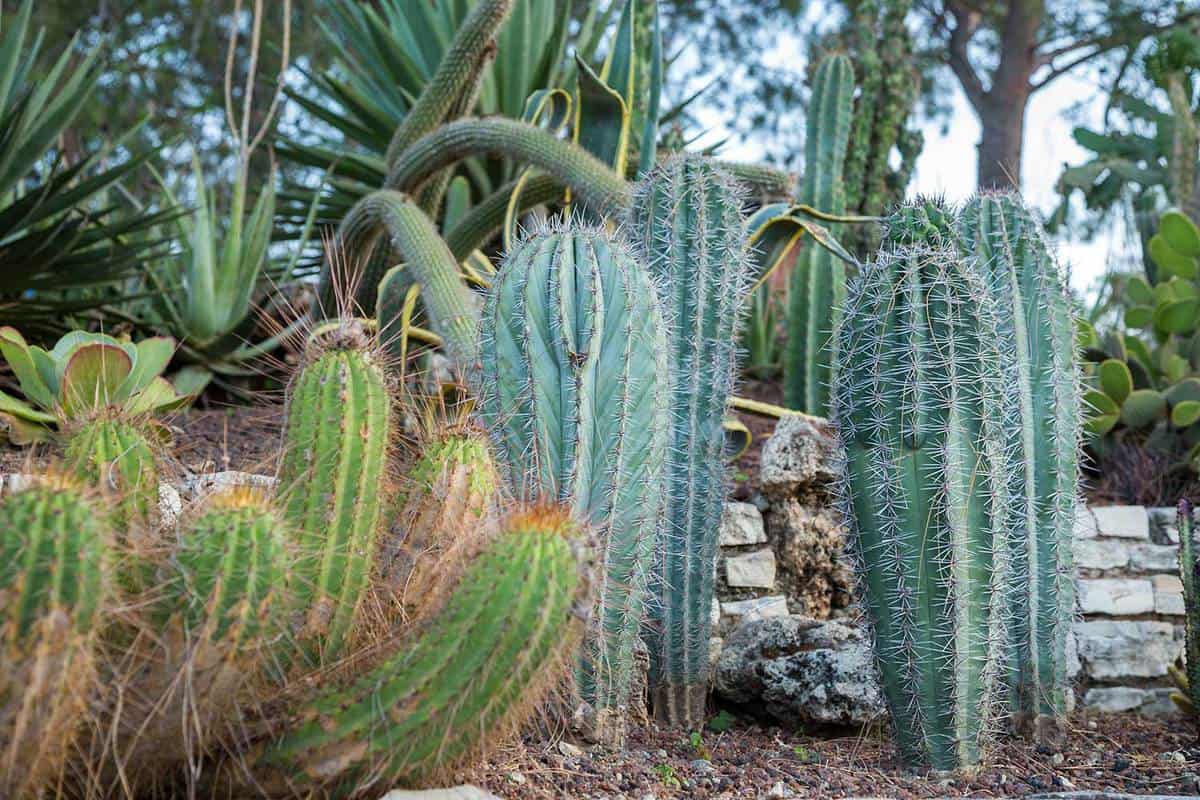
Desert landscape with cactus is one of the most common things you can see here. It is hardy and resilient. It comes in various sizes and shapes with prickly spines, which becomes the renowned feature of it.
The spines are modified leaves. Since cacti live in arid areas, these needle-like features, together with the stems, allows them to lessen water loss during photosynthesis. That is what makes them survive in deserts.
A few of cacti like Mammillaria, Gymnocalycium, and Parodia have prominent blooms that will add pops of colors among the burnt hues.
Cacti are well known for their ability to survive in dry areas. Some of them like Golden Barrel Cactus and Mexican Organ-Pipe Cactus can survive in USDA zones 9 to 11.
Taking care of a cactus is not that hard. Just make sure you do not overwater it. Underwatering is much better than overwhelming it.
Shady Trees
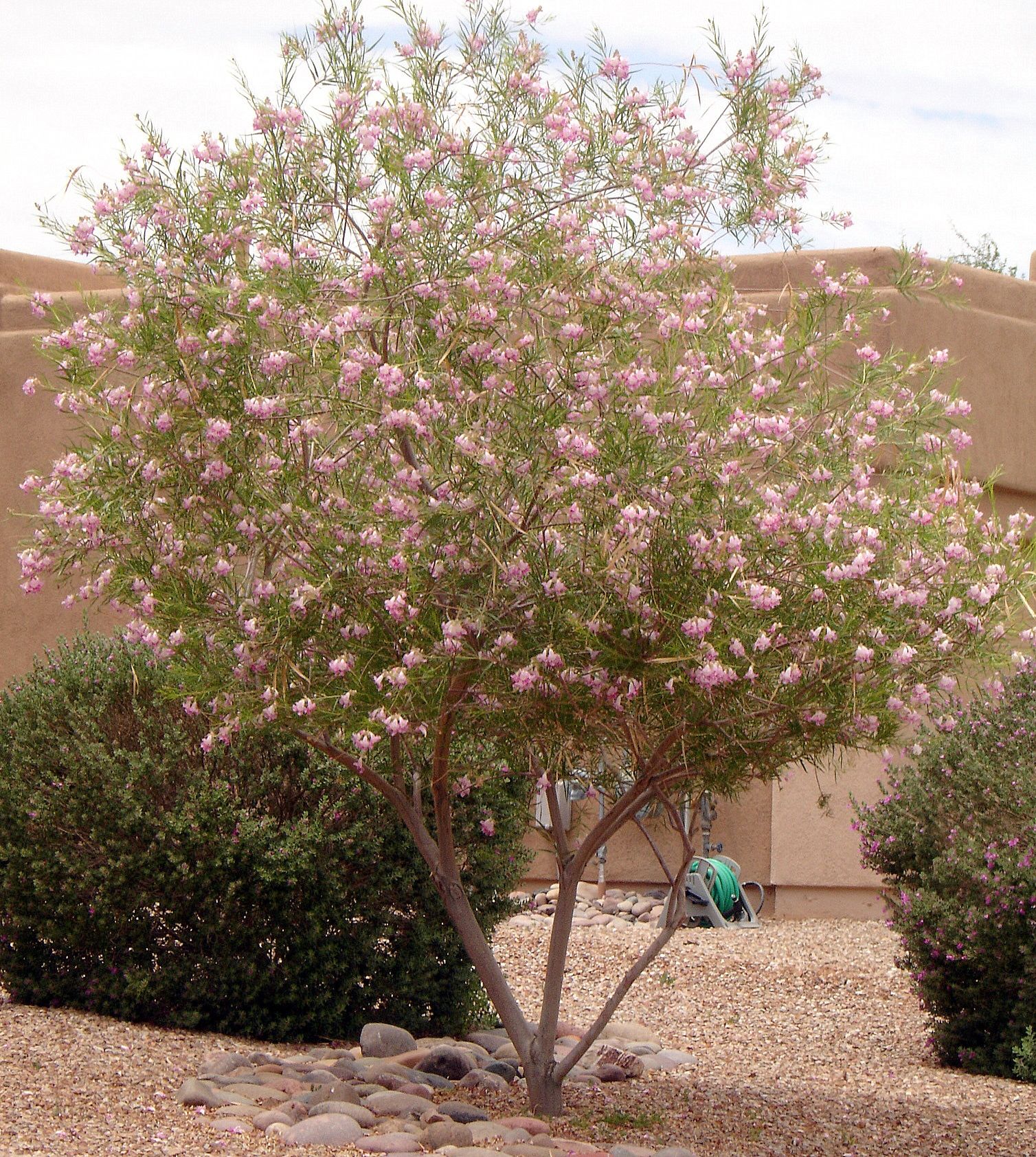
You will be unlikely to see trees in deserts. It does not mean they do not exist, though. Some varieties like palo verde and chitalpa can add shade to your yard as they grow tall and are excellent drought-tolerant.
Another variety that can add shade is desert willow. It is a large shrub or a small tree that can reach up to 15 to 40 feet high. It has dark pink or purple flowers with white and purple streaks. This is definitely what you are looking for to jazz up your garden.
Southwestern-Style Plants
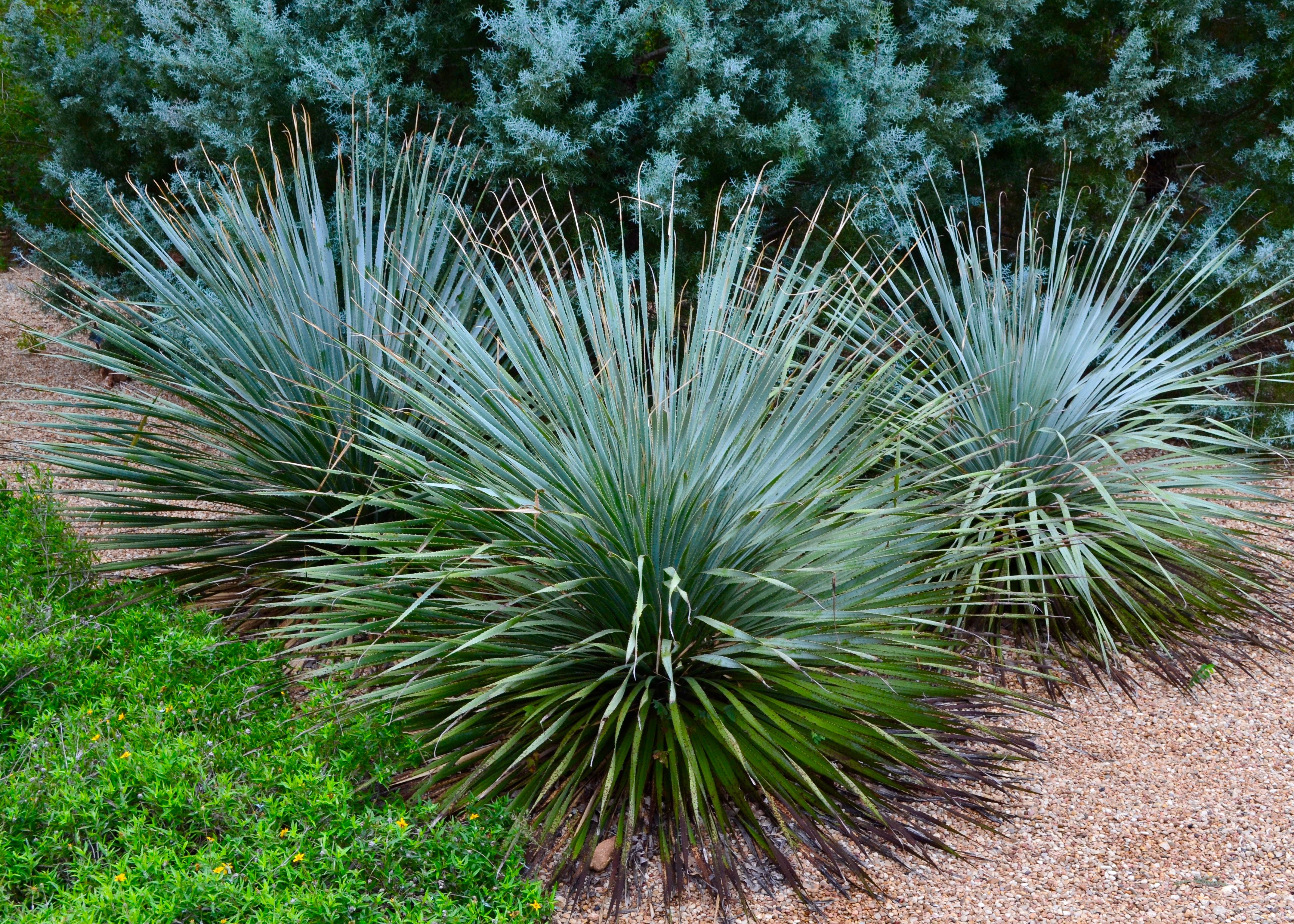
To round out the desert landscape, try adding plants that feature gray, blue, silver, and purple flowers or foliage. These varieties will incorporate a cooling effect into the hot arid landscaping.
One of the Southwestern-style plants is the Dasylirion wheeleri. Especially if you plant it in a rockery, there will be a rippling effect provided by its strappy silver foliages. It can grow in USDA zones 6 to 11.
If you want to add a spectacular view, opt for Shrubby germander. It features flowers in lavender color and foliages in gray that can attract hummingbirds. It can thrive well in USDA zones 8 to 9. Most importantly, it puts up with arid environments.
Desert Landscape Accessories
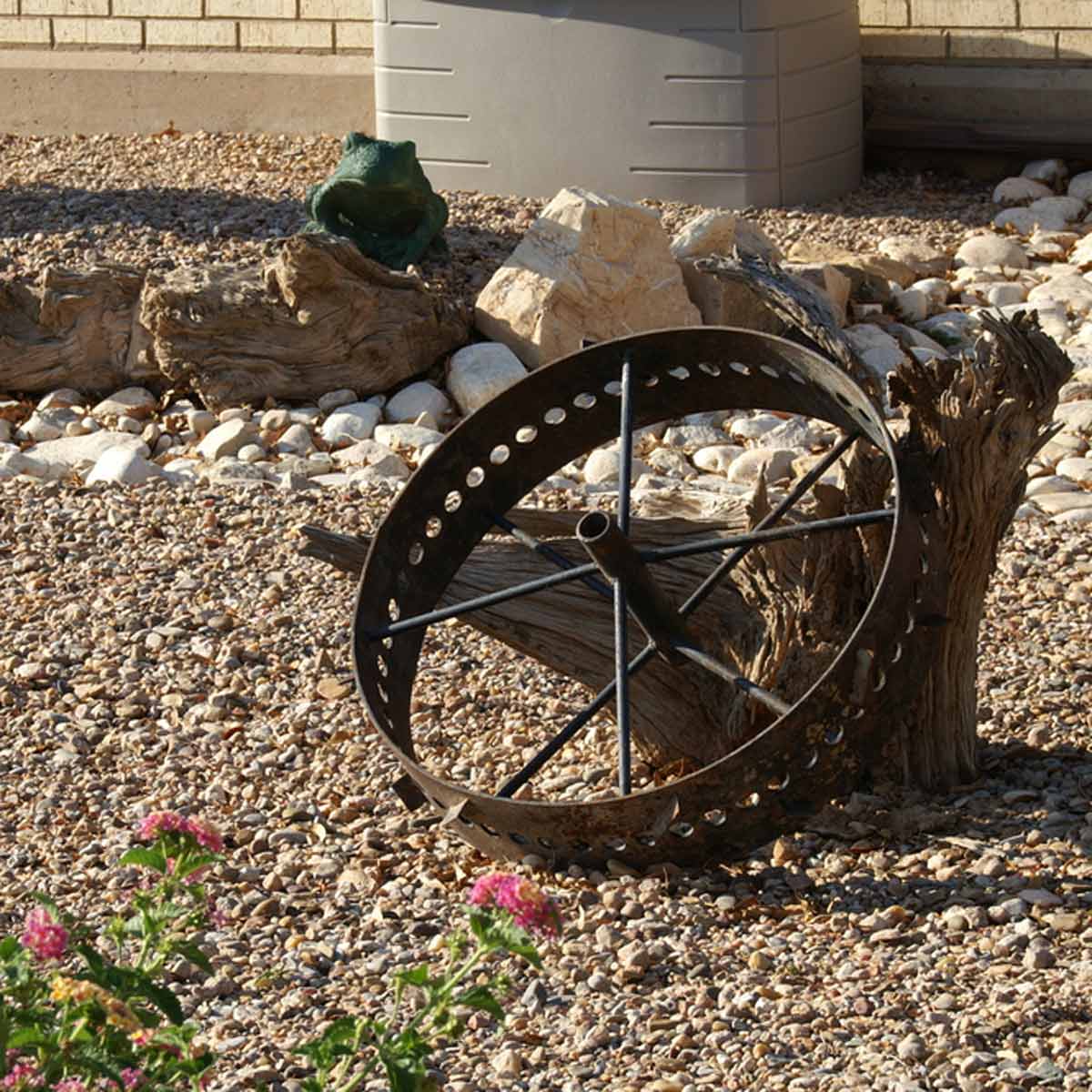
Stones, sand, and drought-tolerant plants are the main elements of a desert landscape. You can kick it up a notch by adding some accessories that embody the life of arid regions.
Longhorn skulls and cowboy lassos are good examples of embellishment that you can add to your yard. Old wagon wheels with weathered finish would also make an excellent addition.
Rustic Rockeries
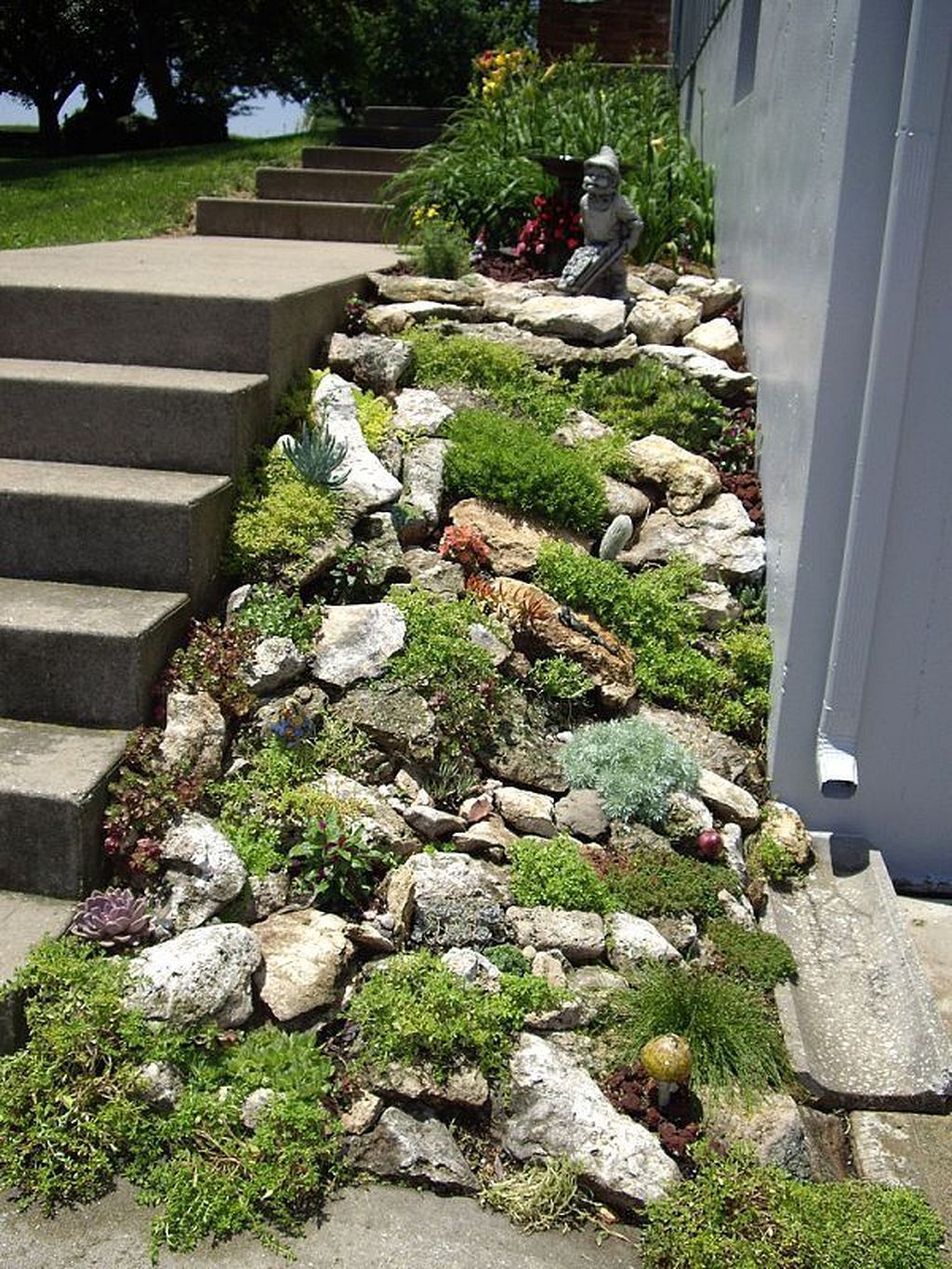
Planting a flowerbed is a dime a dozen. Try something different! It has to be something that emulates the desert landscape like a rockery.
To make this look, stack some rocks so that it looks like a ridge. Fill in the gaps and cracks with soil. Grow cacti and some other drought-resistant plants in them. Finally, enjoy the distinctive charm provided by the rustic rockery.
Create an Oasis

As stated above, you have to use water wisely when it comes to carving out a desert landscape. It does not mean you are not allowed to have a pond. It can emulate the oasis in an arid region.
To make the pond look more appealing, surround it with cacti and flowers. By doing this, you will be able to bring in the oasis to your home.
Pebble Pathways
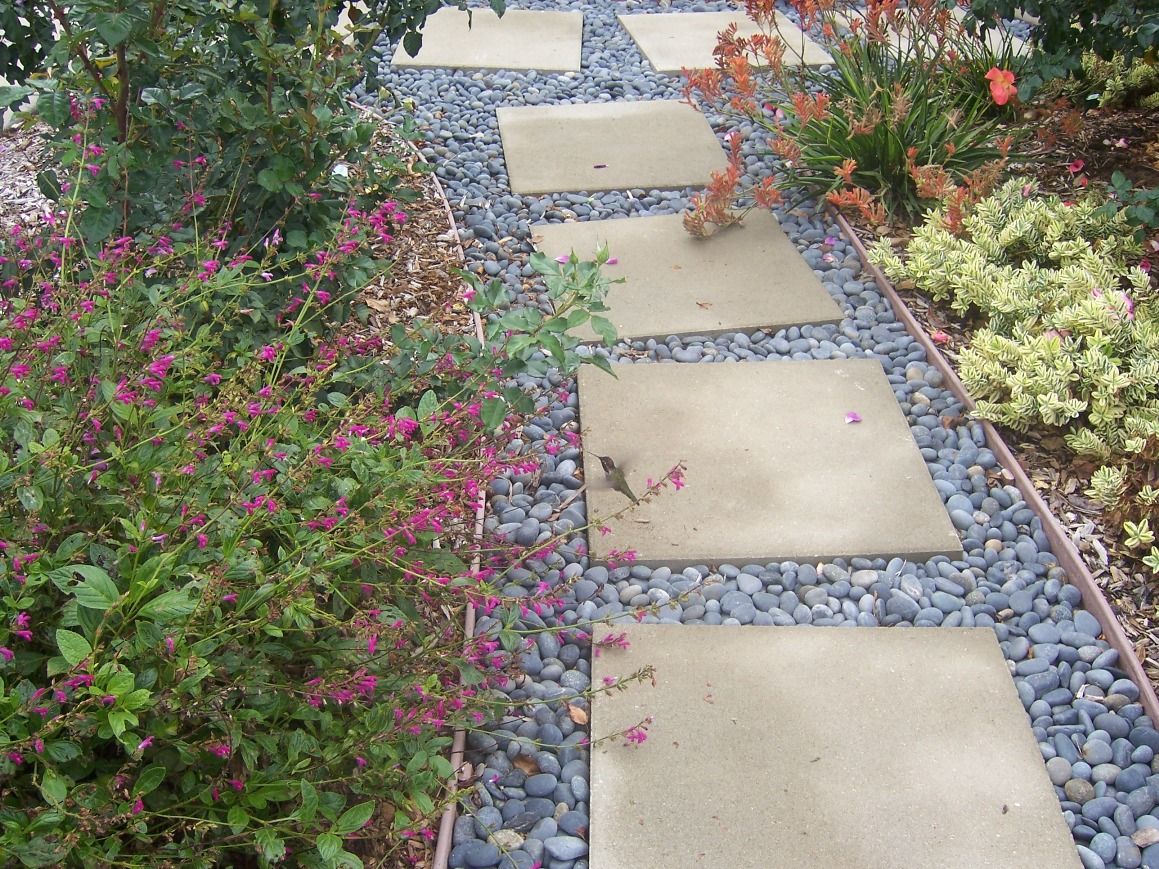
You cannot have a lawn in a desert. Do not see it as a drawback! Think about what you can do without grass and what can replace it.
As a good rule of thumb, pebbles are a perfect choice that can replace the green lawn. Lay them to form a pathway that leads you to a certain spot in your yard.
Try sticking to earthy tones like red stepping stones with white pebbles that can enhance the visual appeal of a desert landscape.
Add Potted Plants
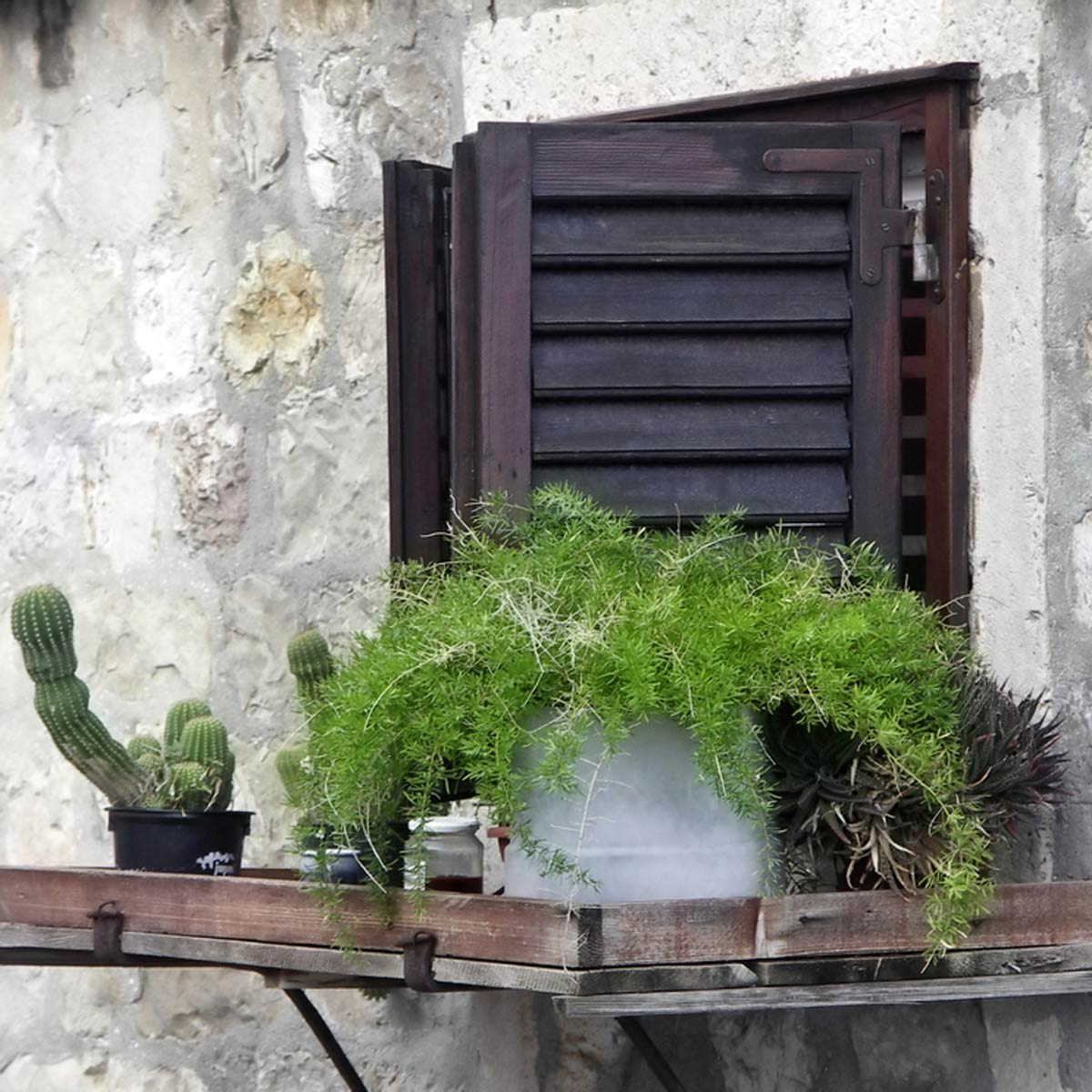
Deserts have loose and sandy soils, which can make water dry quickly. It will be hard to grow plants in them. Therefore, you can always use clay pots to host your plants.
Those are backyard and front yard desert landscape ideas that you can try at home. The key is to use water wisely while improving the curb appeal.
Understanding the hardscape of desert landscaping is the most complicated process of all. However, it is integral to such a landscape, and hence there is a significant need to understand what it’s about.